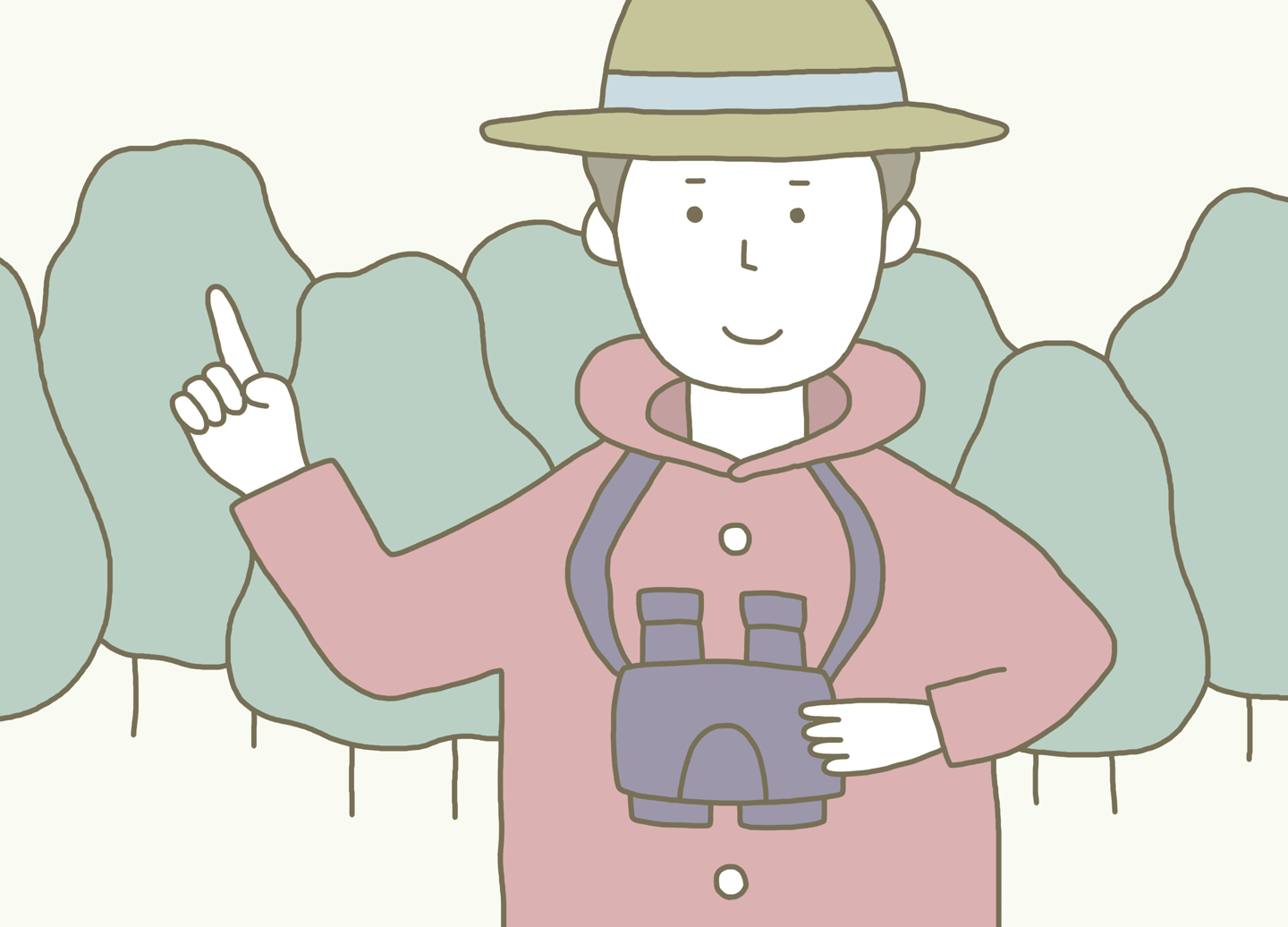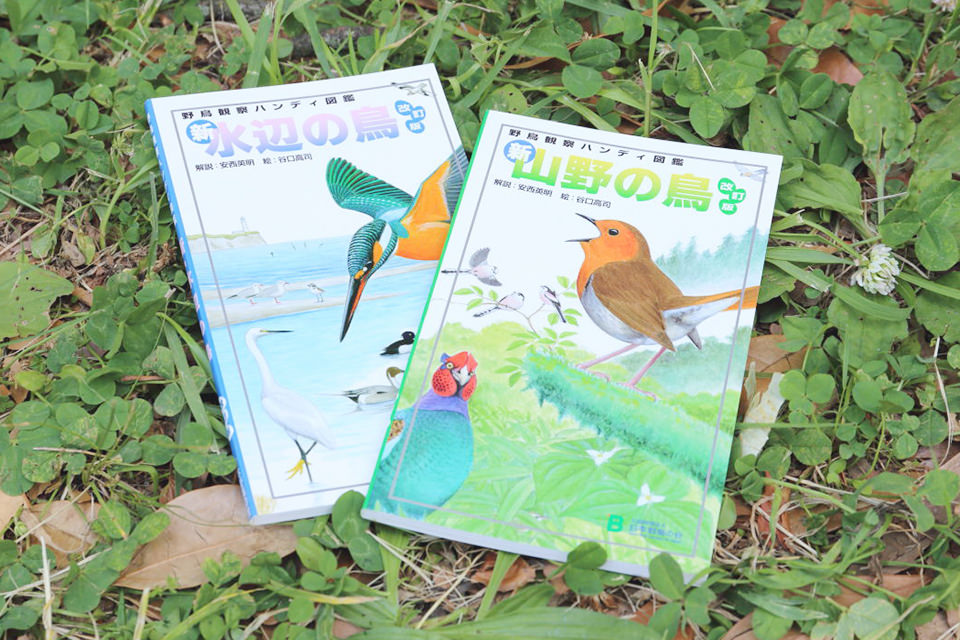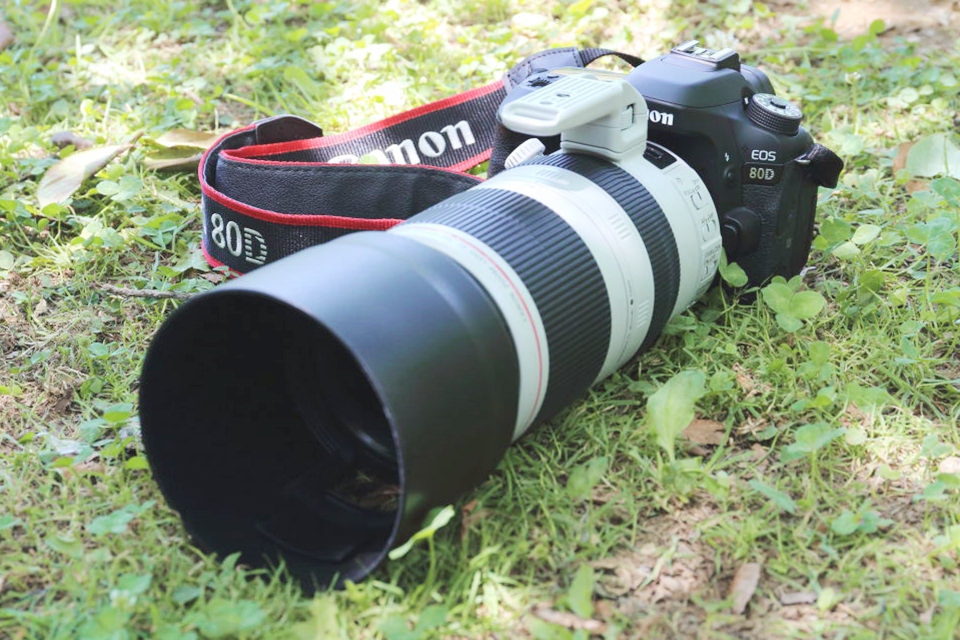Let's go bird watching! Vol.1
Bird watching basics and equipment


Many people who ask me “Where can I go bird watching?” or “Where are the birds?” do not seem to know what to do when I answer, “Birds are everywhere.” Of course, you can watch birds while on your way to work or out for a walk, but really you can watch them anytime and anywhere.
What you need to find birds is “awareness.”
You do not have to go far. I recommend starting in parks near your home or around water areas, such as rivers or ponds. First, give attention to the songs. The sounds we hear in our everyday life include the sound of the wind, the sound of cars and trains, and people talking, but also birds singing. When you hear a bird singing, whether it is “chun chun”, “peet”, or “gyaa gyaa,” try to find out what kind of bird it is. Even though we do not see them, we probably cross paths with close to 20 kinds of birds, besides sparrows and crows in our everyday life.

In spring, many birds (summer birds) migrate to Japan for breeding. Since this is the season when birds are most active, you should have many opportunities to see them. Winter birds, such as ducks, geese, swans and gulls, come in fall and winter. In particular, several types of large ducks can be found around water areas, such as lakes and ponds, in winter. Since larger birds do not move around as much as smaller birds, I recommend them for beginner bird watchers since you can calmly stand and watch them.

What should you take along when you feel like going bird watching in a park near your house? Here's a checklist of equipment and clothing to help you prepare.
If you have a pair of binoculars, you can carefully observe birds far away in trees or on water. I recommend binoculars that have 8x to 10x magnification. You should be able to view birds more comfortably if the binoculars are equipped with image stabilization.
For more information on how to select and use binoculars, please refer to the link below.

There are many kinds of field guides to choose from, but for beginners I recommend a field guide with illustrations that clearly indicate the characteristics of each bird. It will be easier for you to identify birds if the field guide groups the birds according to species and includes such information as plumage color, shape of beak, or size, for comparison. And, I recommend a thin field guide that shows birds that are commonly seen in your area rather than a thick field guide that presents an overwhelming number of species.

Make notes in your field guide of birds you observe. Recording such information as when, where and what birds you have seen by writing the date and location in your guide will also be helpful for bird watching the following year.

Bird watching is an outdoor activity. I recommend wearing a long-sleeve shirt and long pants as standard for protection from the sun and insects. It is also good to have a hat with large rim to block the sun and harmful UV rays in spring and summer. When watching birds you will use both hands to hold the binoculars and your field guide. So, make sure you have a bag that allows you to have your hands free. Wear sturdy shoes. And, be prepared for sudden weather changes by carrying a raincoat or poncho with you; if it rains, you will be glad you did! You can go bird watching even when it's cold outside with proper clothing. For birding in winter, a down jacket and disposable hand warmers come in handy.


The number of people interested in wild bird photography has increased in recent years. Why don't you take a camera along and try taking photos of birds you encounter? For more information on choosing a camera, wild bird photography etiquette, and photography techniques for beginners, please refer to the link below.

You may come across birds suddenly while you are walking along the road, in a park or near the water. Bird watching basically involves looking for birds with the naked eye, but if you carry a pair of binoculars, a more enjoyable world opens up to you. You can carefully observe the body and movement of birds in trees or by waterways that are farther away.

It might seem that a high magnification ratio would be a good thing, but for bird watching, I recommend a magnification ratio of 8x to 10x. This is because the power of magnification is related to field of view: the higher the magnification ratio, the narrower the field of view. Since it becomes difficult to follow birds as the field of view narrows, binoculars with a range from 8x to 10x magnification are best. The magnification ratio for binoculars is indicated as “10x32”. The first number, 10, indicates the magnification or power, while the second number, 32, indicates the objective lens effective diameter, given in millimeters. The larger the object lens effective diameter, the more light the lens lets in, making it easier to see objects clearly.
Let's take a look at the nomenclature of binoculars.

For people who wear eyeglasses, I recommend using binoculars with turning the eyecups to adjust the height for easy viewing.
When you are bird watching, have the binoculars hang from your neck as you walk outside looking for birds. First, adjust the length of the strap on the binoculars before you go out. If you adjust the strap so the binoculars rest against your chest or slightly higher you can easily bring them up to your eyes and look through, and they will not bump against your body as you walk making you tired.

Next, bring the eyepieces of the binoculars up close to your eyes. Adjust the width to fit your eyes by flexing the main body of the binoculars left and right, and then look through the eyepieces. Look through the binoculars with both eyes, adjusting the angle of the eyepieces until the left and right images converge.

You will need to get used to watching moving birds with the narrow field of view of binoculars. Get used to how to use the binoculars by looking at nearby street signs or the like. First, look at the objects on the sign or billboard with the naked eye. Next, without altering your line of sight or the position of your face, smoothly bring the binoculars up to your eyes and look through the lenses. The key is to not take your eyes off the object. Resist the urge to look at the binoculars as you bring them to your face.
Can you see the enlarged object? Can you read the letters on the sign? Is it in focus? If it is not in focus, adjust the focusing knob. The closer the object is to you, the more difficult it is to get in focus. Practice focusing by first looking at an object in the distance, and then look at ones that are progressively closer.
Viewing the subject first with the naked eye and then looking at the enlarged image through binoculars are the basics of using binoculars.

So let's start bird watching. First, look for a familiar bird such as a crow or a sparrow with your naked eye. When you find one on the ground or perching on a tree branch, raise the binoculars to your face without breaking your line of sight. Can you see up close, for example, the shiny luster of the crow's feathers, the color of its eyes, or the movement of its wings? One of the joys of bird watching is seeing a world that you hadn't known before. For beginners I recommend looking for birds that are off in the distance, rather large in size, or stationary.





When fixing your sight on a small object such as a small bird on a tree branch, it would be good to move the binoculars along an easy point of reference such as the trunk or a branch.

Never look directly at the sun through binoculars. And, show good manners by refraining from aiming the binoculars at people or using them in residential neighborhoods.
People with a difference in vision between the right eye and the left can adjust the dioptric power of the lenses. First, look through the binoculars and cover the right barrel with your hand. While looking only with the left eye turn the focusing knob to focus clearly on a middle-ground object. Next, cover the left object lens by a left hand, look through the right eyepiece only and look at same object while turning the dioptric correction ring until the object looks sharp. Finally, look through both eyepieces at once to check that the image is in sharp focus in both eyes.
